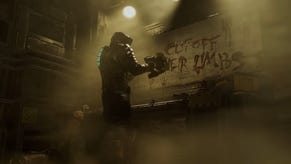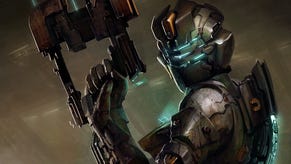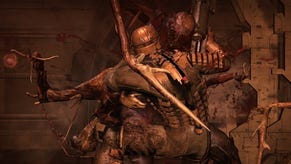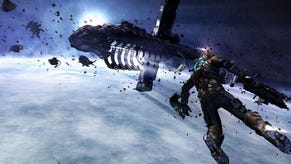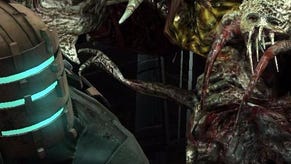Face-Off: Dead Space 2
Margin of terror.
| Xbox 360 | PlayStation 3 | |
|---|---|---|
| Disc Size | 6.3GB (disc one), 6.4GB (disc two) | 13.8GB (inc Extraction at 3.46GB) |
| Install | 6.3GB (disc one), 6.4GB (disc two) | - |
| Surround Support | Dolby Digital | Dolby Digital, 5.1LPCM, 7.1LPCM |
We've been producing Face-Off features for almost four years now. In that time we've seen many releases with massive technical differences that impact the gameplay experience, and we've waded through hundreds of titles where one platform may have marginal technical advantages over the other. However, it's rare that a game comes along where Xbox 360 and PlayStation 3 versions are so close that it is almost impossible to tell the two apart visually.
Burnout Paradise was such a game, as was its unofficial successor, Need for Speed: Hot Pursuit. So was Visceral Games' enjoyable, if limited, Dante's Inferno. Dead Space 2, though, is the latest and perhaps greatest example of cross-platform conformity we've seen with Xbox 360, PS3 and indeed PC all providing the same, utterly brilliant experience.
Comparison assets demonstrate just how close these games look. There are actually two galleries to peruse this time around - a dual-format PS3 and 360 selection along with a triple-format offering that also includes the PC game. To begin with though, let's take a look at the two console versions.
There's a similar setup to the original Dead Space here: both Xbox 360 and PlayStation 3 versions of the game feature a native 720p framebuffer but no anti-aliasing. While there are some noticeable "jaggies", the muted colour scheme of the game, combined with the nature of its incredible lighting, mean that the overall quality of the presentation is excellent.
Anti-aliasing doesn't play nicely with a fully deferred rendering setup and that's exactly what Dead Space and its sequel use. Traditional "forward" renderers have some serious issues when they reach a certain amount of dynamic lights in any given scene: the deferred approach means that hundreds of light sources can come into play.
While many games use this technique (or a light pre-pass variant as seen in Blur or GTA IV to name but two), Dead Space is a series where dynamic light and shadow are utterly crucial to the design of the game and how it plays. Without deferred rendering, Dead Space simply wouldn't be the same game. The sequel ups the ante significantly, with a significantly more varied range of environments, not to mention much more colour.
The first Dead Space was an accomplished cross-platform project, but there were some areas where we could see inexplicable drops in frame-rate on PlayStation 3. Clearly Visceral is pushing its tech still further with the new game, so how do the two console releases stack up from a performance standpoint? Pre-Christmas, our PS3/360 demo showdown suggested that aside from some minor frame-rate fluctuations which were almost unnoticeable the human eye, the two games were indeed virtually interchangeable.
Now, with the full game in our possession, we can run more analyses, starting with a comparison of exact like-for-like scenes. This test allows us to see how the rendering engine copes from a performance standpoint when the exact same load is being placed on both systems.
There's nothing here aside from the odd, unnoticeable dip in performance that suggests that one version of Dead Space 2 has any kind of tangible advantage over the other. Engine tests like these can be revealing, but it is also fair to say that in these situations the game designers have complete control over what is happening on-screen and can optimise accordingly. It is also the case sometimes that assets used in cut-scenes are pared down in-game (see Resident Evil 5, where we counted at least three Chris Redfield models) or where effects such as shadow quality are beefed up.
Our second test is to select clips from the same area of the game on both platforms. While we don't get the respective engines processing the exact same scenes as in the previous video, over the course of the analysis we get a decent view of the overall run of play - this is probably more important to the average gamer.
Another test successfully aced. Again we see minor frame-rate differences, but nothing that can actually separate the two versions of the game: Dead Space 2 looks the same, it plays the same. You can buy either release safe in the knowledge that you're getting a magnificent game.
There are other differences, however. From a packaging perspective, the PS3 release ships on just one Blu-ray disc, while the Xbox 360 game comes on two discs. In the past we've seen that this is often to accommodate video sequences, but throughout our run on Dead Space 2 it became clear that FMV was very thin on the ground: Visceral needed that space for pure game assets. As it happens, the actual impact of the disc-swapping is minimal should you choose to buy the game on Xbox 360. Dead Space 2 is a linear experience, so you just need to swap discs during chapter seven.
Similar to Medal of Honor, the PS3 package does include a bonus freebie though - one that is of much more worth than the somewhat disappointing remastering of Medal of Honor: Frontline HD. The on-rails shooter, Dead Space Extraction, rated at 8/10 in its Wii incarnation is included for free. It's an excellent bonus - and a treat for PlayStation Move owners. While its visuals don't quite compare to the opulence seen in Dead Space and its sequel, it still scales up fairly nicely to HD resolution.
Returning to Dead Space 2, PlayStation 3 also benefits from enhanced surround sound options, with uncompressed 5.1 and 7.1 options available. This is a game whose atmosphere is enormously improved with a good surround sound setup, and while the 360's mix is still sensational, there is an added sense of depth to the aural experience by using PS3's HDMI 1.3 audio options.
Clearly then, with all these incidental factors added into the equation, the PlayStation 3 version of the game is looking like a tempting proposition. However, there is still the PC release to factor in as well.



